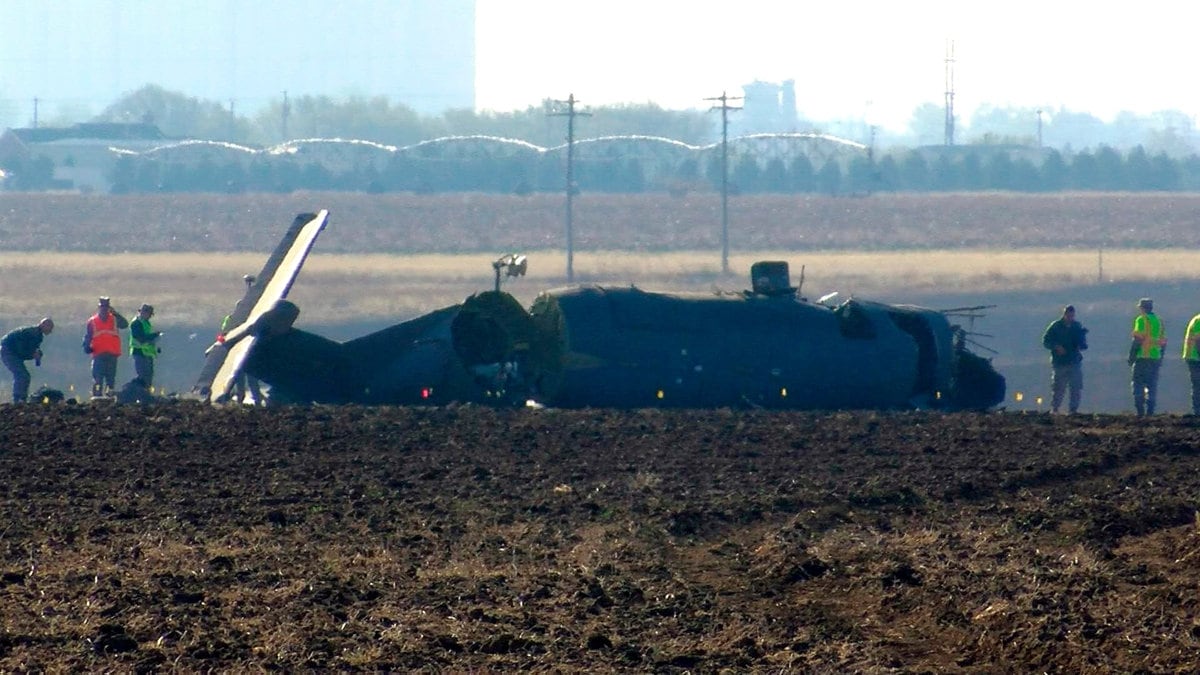The crash that killed three airmen during a March training mission in New Mexico was caused when the crew lost control of the U-28A during a stall, according to an accident investigation board report.
The July 7 report, signed by board president Brig. Gen. Brad Sullivan, found that the crew’s mistakes resulted in the crash, and ruled out other factors such as mechanical, maintenance, weather or fatigue problems.
Capt. Andrew Becker, a 33-year-old pilot; Capt. Kenneth Dalga, a 29-year-old combat systems officer; and 1st. Lt. Frederick Dellecker, a 26-year-old co-pilot; were killed on impact, the report said. All three were assigned to the 318th Special Operations Squadron at Cannon Air Force Base in New Mexico.
The crew practiced a series of maneuvers in the U-28A ― a manned fixed-wing aircraft that provides intelligence, surveillance and reconnaissance for special operations forces ― during the March 14 training sortie, before attempting to practice a turnback emergency landing pattern. That maneuver is typically conducted when a plane suffers an engine failure after takeoff, so the pilot has to turn around immediately and land on the runway he has just departed.
During that maneuver, pilots are supposed to set their flaps to 15 degrees, the report said. However, the U-28A’s crew began their turnback with flaps set to zero degrees.
The report said that this caused the plane to descend at a higher rate, and for its nose to be angled further down, than it would have if the flaps were at 15 degrees. The zero-degree stall speed is also about 15 to 25 knots higher than the stall speed would have been with flaps at 15 degrees, the report said.

The crew was also late when achieving the proper bank angle necessary to align the plane with the runway’s center line, according to the report. As the plane descended, several ”sinkrate” and ”pull up” warnings sounded.
The crew tried to fix the “extreme” nose-down attitude, steep descent rate and shallow bank angle at a low altitude by pulling back hard on the yoke and increasing the bank angle, the report said. However, the resulting g-load caused the plane’s speed to drop below the zero-degree stall speed, and the crew lost control of the aircraft. They tried to increase the power after the stall began, but it wasn’t enough to overcome the descent rate. The crew never tried to abort the maneuver, the report said.
The plane crashed three hours and 23 minutes into the sortie.
The report said the crew’s attempt to pull back on the yoke and increase the bank angle ― a human factor referred to as an “overcontrolled/undercontrolled aircraft” ― was the primary cause of the stall that led to the crash. The crew also “rushed or delayed a necessary action” by not configuring the flaps properly, and failed to adequately assess the risks of this maneuver in real-time.
“The [crew‘s] delay configuring with 15 [degree] flaps changed the [aircraft’s] performance envelope,” the report said. ”The [crew’s] failure to address the [aircraft’s] bank angle prior to overshoot required greater bank to regain the runway. These factors, combined with the [crew’s] failure to abort the maneuver or increase power prior to onset of the stall, indicate the [crew] failed to recognize the increasing risk they incurred as they progressed through the mishap maneuver.”
Becker, Dalga and Dellecker were all current and qualified, and their experience was not a factor. Becker was a senior pilot with 750 sorties and 3,400 flight hours.
Stephen Losey is the air warfare reporter for Defense News. He previously covered leadership and personnel issues at Air Force Times, and the Pentagon, special operations and air warfare at Military.com. He has traveled to the Middle East to cover U.S. Air Force operations.




